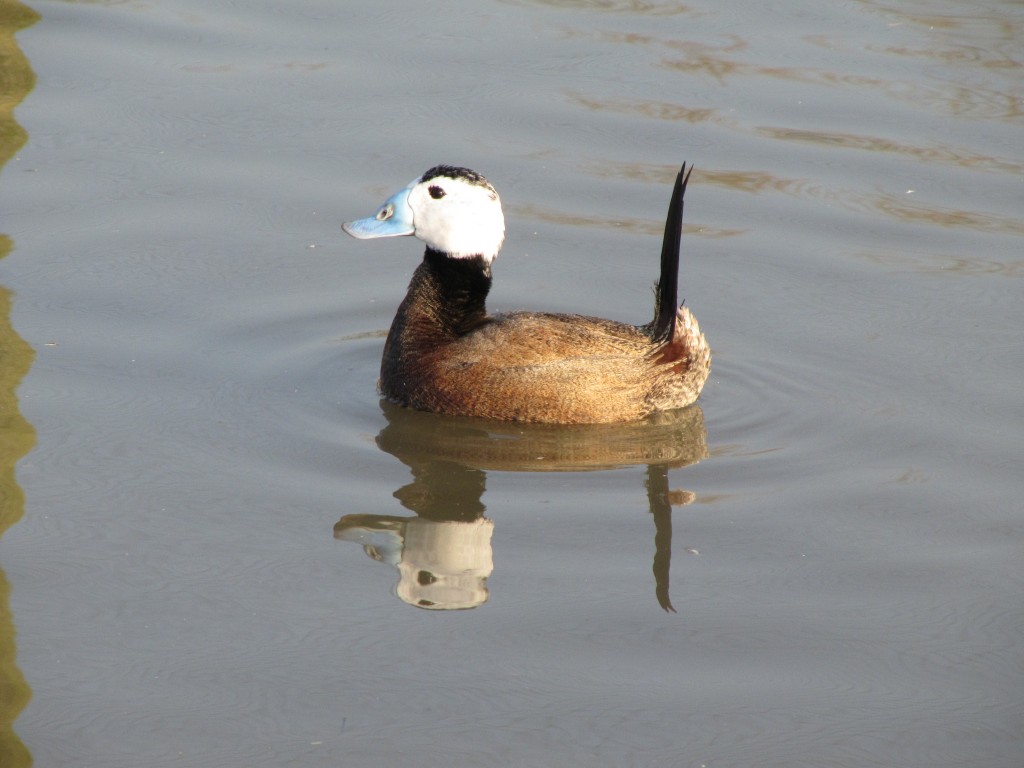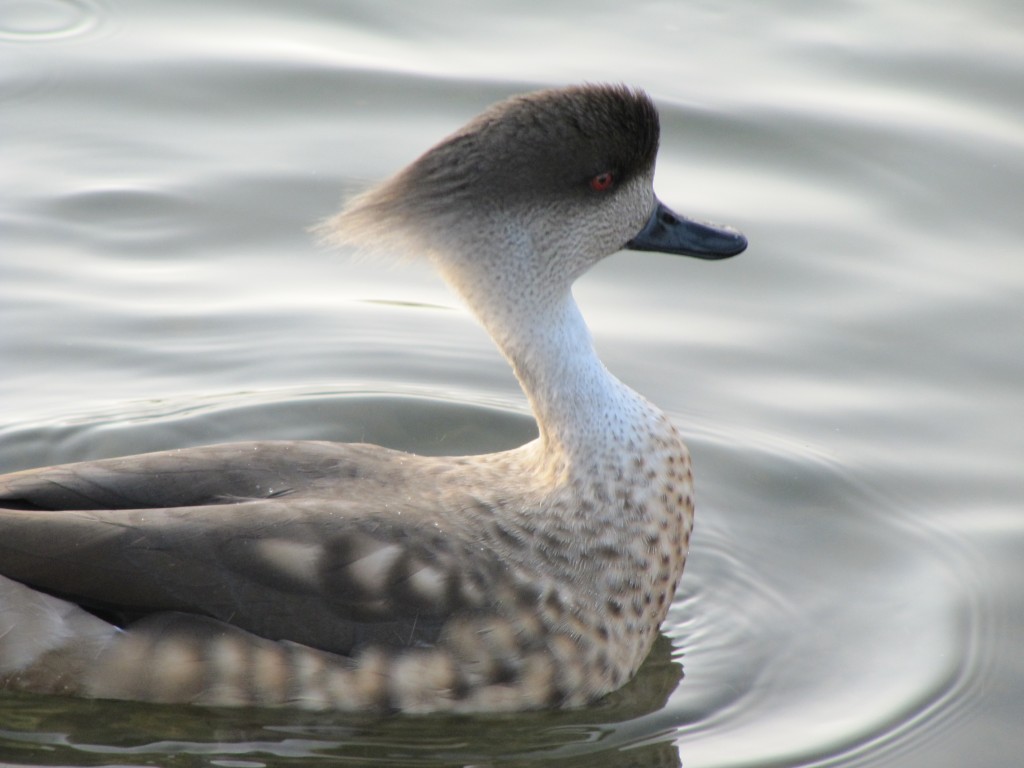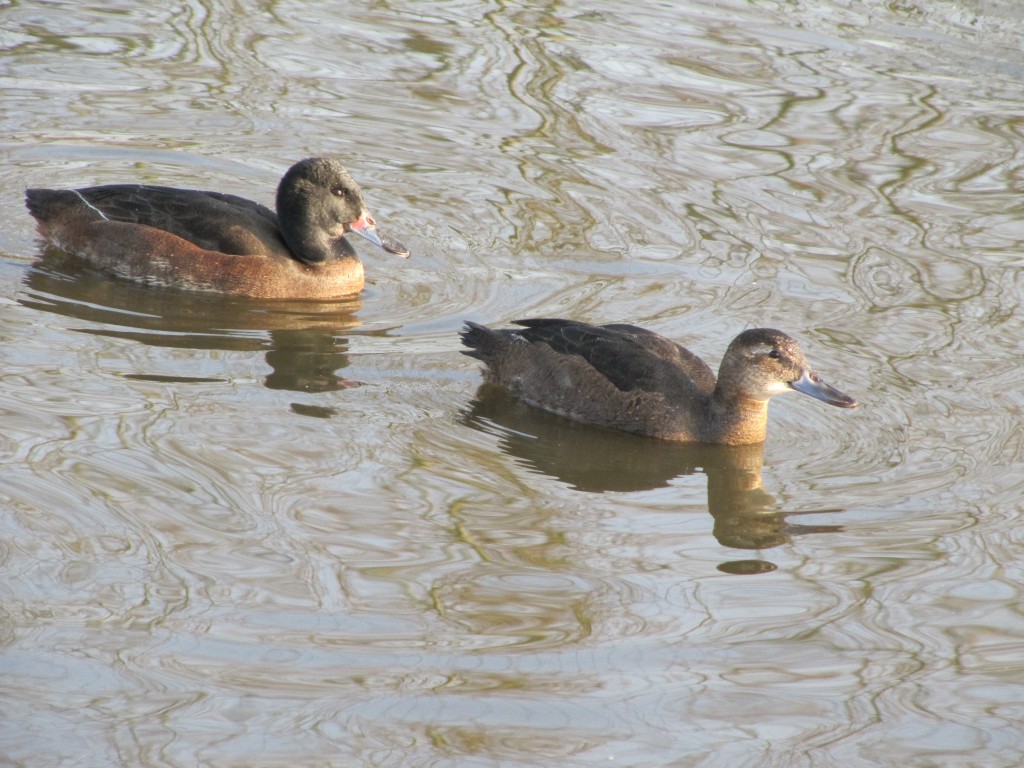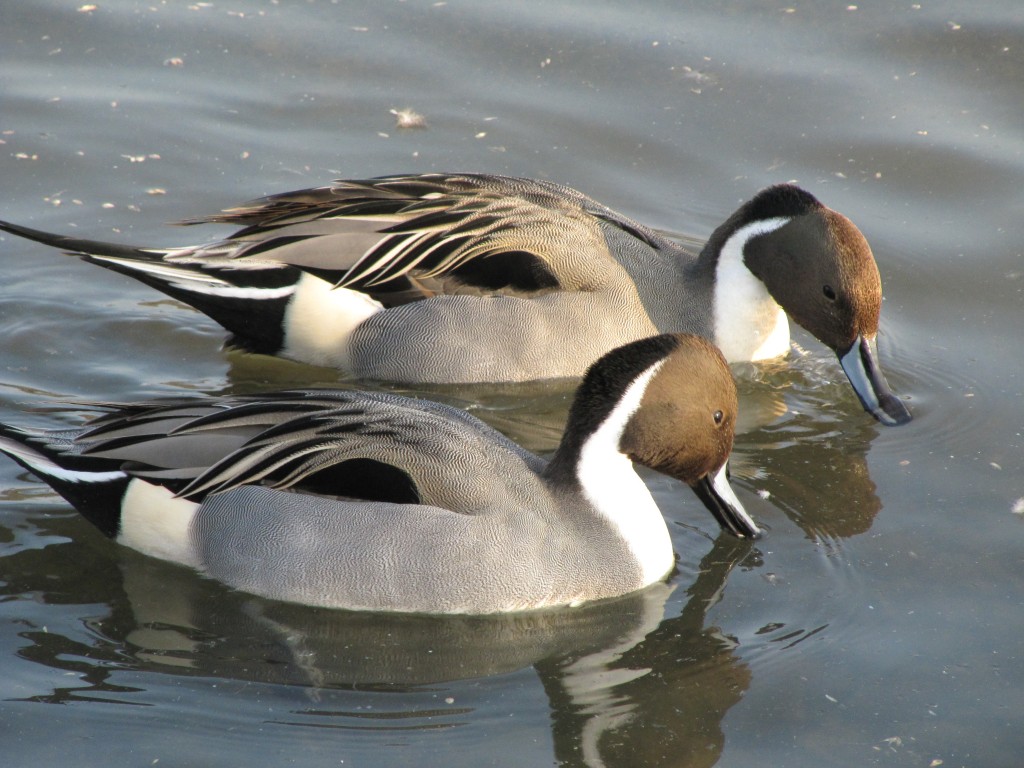Breeding behaviour.
Lots of my breeding pairss are getting in the mood... Others? Well they're just showing off!

Including... the glorious white-headed duck. Nothing heralds the sound of spring like a puffed up white-head shuffling side to side to his female audience! Much of the day is spent stood to rigid attention (see above) but when one of his females accidentally catches his eye, a whole new repertoire is unleashed. He puffs out his chest, fans his tail and lays it low to the water, and twists his head laboriously round.Then he begins to thrust alternately with his feet, shuffling his body weight side to side in the water producing rapid rippled bow waves. He couples these thrusts with an off beat " (silent beat, cheep cheep!) An intoxicating off-beat high pitched note that travels across the aviaries.
The male above still has a lot of colouring up to do. As our prime breeding male began to show signs of age a couple of years ago, we placed a young male in with the group in order for him to mature alongside his future wives. He is now finally beginning to look the better of the two, as my old chap still has much of his moult to accomplish! Maybe then, the new boy might be top dog in 2013, and we can retire my golden oldie.

Others are new to the game... This young Patagonian crested duck has also been indulging in a bit of breeding display. Unlike the showy white-headed full-blown dance routine, theirs is all in the head extention and crest. When there is severe competition, they will also raise their tail to the most vertical position they can muster. Unlike other wildfowl Patagonian crested ducks have the most matriarchal society I have ever observed, with the females absolutely kicking bottom at this time of year! Nearly every morning I find a mallard or moorhen struggling across the pond with a feisty Patagonian female attached to its bottom! In fact they are rarely found without a feather from another species attached to their beak. They are exceptionally agile on foot too, and will chase around species much greater in size than themselves. Whether it's the bonding, the exercise, or increased blood flow; a good chase prompts a good copulation, we're told!

And others need some special attention...
These black-headed duck above are a very exciting addition to our breeding aviaries. Having bred 7 in 2011 we then promptly lost the female, and have had a laborious 2 year wait and the challenge of sourcing new blood before the babes were ready to breed themselves. I'm ready for a multitude of false starts and disappointments, but if nothing else, I already have the satisfaction of observing that this male finds his new female utterly captivating!
These cuckoo ducks are unique amongst wildfowl. Related closely to stifftails, these remarkable ducks have the shortest of partnerships, shortest incubation period, and most lonely existence. After mating, the female forms the egg inside her oviduct before depositing it in the fresh nest of another species, and leaving it behind forever. These birds never incubate, and never raise or feed young. Instead the duckling hatches out of its shell, absorbs its yolk sack, dries off under surrogate mum, and then promptly swims off! Although confused, the surrogate mum continues with the rest of her brood, and the BHD rears itself completely independantly. Wow!

Everyone's favourite; the Northern Pintail. These lads have no female company at the moment before they are redistributed to another trust centre, but they keep me well entertained currently with their regular "i'm sexier than you" routine.
Everything is beginning to get in the mood, so the next time the sun makes a break for it; head down to Slimbridge to observe some breeding beahviours!

